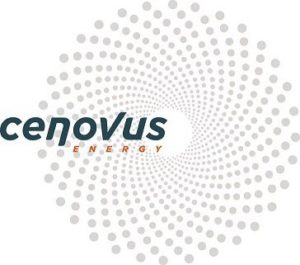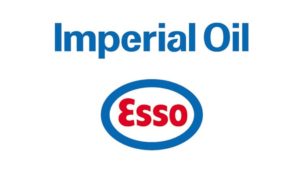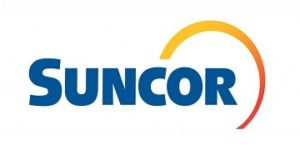In this post, I examine the dividend streams of the four major oilsands producers as well as other major producers of oil and natural gas. The PDF figures which follow indicate the dividends paid or declared by 18 of Canada’s largest oil and gas producers over the last 10 or so years. Overall there was a notable drop in dividends paid beginning in 2016, about one year after the significant plunge in oil prices. Beginning in late 2020, with a recovery in oil prices, there has been a significant increase in dividends going to shareholders.
Up until 2021 oil and gas shareholders suffered capital losses on the prices of their shares. Those investors that sold their shares at significant losses are regretting the rebound in oil and gas company shares.
Logos of the Big Four




Updated 17 March 2022
I first examine the dividend streams of the four major oilsands producers (Cenovus, CNRL, Imperial Oil, and Suncor) and later other major producers of oil and natural gas. The PDF figures which follow indicate the dividends paid or declared by 18 oil and gas producers over the last 10 years and more detailed analysis of the Big Four’s tax and royalty payments, revenue, and capital investment.
Dividend history of Canadian majors
As the charts below reveal, there is no “one size fits all” approach to dividend payments by Canada’s major oil producers. The first four charts are dividends paid per share over roughly a ten -year time period (time periods vary according to availability of data). While most companies pay dividends quarterly there are a few- usually royalty trusts- that endeavour to pay their shareholders a monthly distribution. Most companies pay in Canadian dollars or, in some cases, companies grant investors the choice of U.S. dollar payment at a determined exchange rate. Some companies pay dividends in U.S. dollars such as Imperial Oil (IMO) and Enerplus.
Note a few of the charts go from most recent payments to earlier payments left to right, Most charts have early dates beginning on the left.
Energy-cos.-dividends-1Imperial Oil (Figure 3) and CNRL (Figure 2) have been the most consistent in raising their dividends annually over the past 20 years (CNRL) and over the past twelve years for Imperial Oil. This speaks to a fiscal conservatism in paying dividends and ensuring that committed increases materialize. In the case of Cenovus (Figure 1), its dividend was reduced significantly in 2015 when oil prices fell from $0.26625 to $0.05 per share in March 2016 and then to its lowest point of 1.175 cents in June of 2021. Since then Cenovus has increased its dividend to 3.5 cents a share. Companies normally do this to conserve cash. In Cenovus’s case, its 2017 $17,7-billlion purchase of the Canadian assets of Conoco Phillips led to a heavy assumption of debt necessitating lower payouts to investors. With oil prices now over $100 U.S. expect Cenovus to resume raising its dividend.
In the case of Suncor (Figure 4), the company had a track record of consistently raising its dividend payout each year since 2008. In March 2020, just prior to the COVID pandemic, Suncor had increased its dividend to 46.5 cents a share. Suncor abruptly cut its payments by more than 50 per cent to 20 cents for the next six quarters. In September 2021, the company raised its dividend to 42 cents. We expect the dividend to expand as higher oil prices make boards of directors confident the current and rising dividends are sustainable.
The following chart (Figure 5) illustrates the total annual dividend payments by the four majors. Until the reduction in the dividend rate in 2020, Suncor was the big payor, now eclipsed by the slow and steady increases to CNRL’s dividends. In the seven fiscal years, 2015-2021, the Big Four have returned $30- billion in dividends to their shareholders, with $4.6-billion in 2021. .
Big Four Taxes
Figure 6 shows the amount of income taxes paid by the Big Four over a seven -year period. These four companies paid $3.8 billion collectively in corporate income taxes mainly to the federal and Alberta governments. The chart also illustrates the impact of lower oil prices. (For some reason, I could not find the information on taxes actually paid instead of the taxes payable on the income statement of IMO for 2015-2017.) There are however sharp differences in who paid taxes.
Oil companies can build up huge deferred tax liabilities because there is a difference in the tax treatment of the capital cost allowance which allows the company higher tax deductions for its capital than show up for accounting purposes as depreciation and amortization in their financial statements. As shown, CNRL has been able to significantly benefit from the existing tax system and in fact received refunds of nearly $1.1-billion from various governments. IMO was also parsimonious in its tax payments to governments contributing only $79-million to governments throughout the period. Suncor and Cenovus were the biggest taxpayers, Suncor contributing $3.7-billion with Cenovus anteing up $1.3-billion.
Big Four Royalties and Revenues
Figure 8 illustrates the total revenues of the Big Four which totaled $148-billion in 2021 alone. Over seven years, total revenues of these four companies were an astounding $718-billion. Taxes paid as a percentage of total revenue was one half of one per cent. The next chart illustrates the royalties (Figure7) paid by these companies which totaled $21.5-billion to governments, mainly Alberta. The royalties’ return to taxpayers as a percent of total revenue equates to three percent of total revenue. (I could not find royalties on IMO’s financial statements from 2015 to 2019.) Including IMO royalties would increase the percentage marginaly. Taxes paid as a percentage of net comprehensive income was 10.5 per cent which excludes three years of IMO taxes.
These measly returns to the federal and Canadian taxpayers should be of concern to all Canadian governments, politicians and taxpayers.
Are the majors investing or divesting?
There has been some criticism about oil and gas companies rewarding their “long-suffering shareholders” with special dividends; dividend boosts, or what are known as “share buy-backs.” Share buy-backs occur when a company elects to use its free cash flow to buy its shares on the stock market. Management and its board are making the judgment that the best use of its extra cash flow is to reduce the shares outstanding thereby increasing net income per share which, all things being equal, would increase the share price. One criticism of this practice is that this tendency reduces both the company’s long-term growth prospects and the economies of its hosts due to lack of reinvestment. Another criticism is that buying back shares simply rewards shareholders and executives, whose income is largely paid in the form of stock options) with appreciating share prices and dividend increases through the share buyback approach.
To get a sense of what the Big Four are doing from an investment or divestment perspective. I examined the companies’ statement of cash flows which discloses the cash used in investment activities- mainly additions to property, plant and equipment, minus depreciation on these assets. The result is what I calculate to be the net investment by the companies. Net investments also reflect the acquisition of assets by these companies (Figure 9). In 2017, Cenovus acquired the Canadian assets of Conoco-Phillips for $17,7-billlion and the same year, CNRL snapped up Shell Canada’s 60 per cent working interest in its Athabasca oilsands project, the Scotford refinery and other assets for nearly $14-billion. These measures boost the cash used for investing purposes. The results of this examination are presented in Figure 9.
Figure 9 shows that, except for 2017 when CNRL and Cenovus completed transformational acquisitions, the Big Four’s capital investments are insufficient to keep up with the depreciation of their facilities. If this interpretation is correct, it might reflect a recognition by boards of directors, that fossil fuel extraction is likely not a viable business in the long-term. This divestment runs counter to the current political narrative and hope of the UCP government that Alberta now has a responsibility to assist the rest of the world meet their energy needs with clean, responsible, ethical Alberta oil.
It should be noted that the purchases of Conoco-Phillips and Shell Canada’s assets did not add any new investment into Alberta. Only the ownership of the assets changed. In 2021, Cenovus concluded a merger with Husky Energy. Not one additional dollar of investment was created or job added. These ownership changes are financing activities not investing activities. These transitions re mostly driven by creating and meeting promised efficiencies on the merger or takeover. This activity usually results in fewer employees in the combined firm.
Who will pay for the environmental clean-up?
Another aspect on the divestment front is the unresolved question about what is to be done with the oilsands producers massive environmental liabilities, particularly the tailings ponds. In others words, who is really going to pay for the cleanup” The booked liability for “decommissioning” or “asset-retirement obligations” for the Big Four is over $20-billion at the end of December 2021 (Figure 10). This number is much lower than the estimate of $100-billion for the oilsands which AER’s then Vice-President, Liabilities Rob Wadsworth gave to the Calgary Oil and Gas Historical Society in February 2018 . Wadsworth’s numbers were immediately disavowed by the Alberta Energy Regulator. The AER’s estimate of around $30-billion for the oilsands accords generally with the Big Four’s estimate. However, these numbers will come under greater scrutiny as disclosure practices are upgraded by securities regulators.
Dividends Declared by smaller majors
The final charts (figures 11-24) show the dividend payment stream of mid-sized producers who are mainly conventional oil and natural gas producers. Overall, there was a significant drop in dividends beginning in 2016, about one year after the significant plunge in oil prices. Beginning in late 2020, there has been a significant uptick in dividends going to shareholders as producers reward their shareholders who have suffered paper capital losses until now for holding on to their shares.. Over the past 18-months as oil prices recovered so too have share prices rebounded rewarding those who had persevered during the .five years of low oil prices.
Some producers are not paying dividends such as Advantage Oil (Figure 11). Advantage had paid dividends in the mid-2000s. Baytex Energy (Figure 13) paid dividends from 2011 to 2015 but has not yet reinstated its dividend. ARC Resources (Figure 12), which has consistent paid monthly dividends, cut its payment in half in 2016 but has recently reinstated and increased its dividend substantially. Many companies have concentrated upon paying down debt before considering bringing back shares or raising dividends. Birchcliff (Figure 14) kept paying a dividend until 2019, then suspending the dividend, and have reinstated a dividend this past December of one penny. In the case of Secure Energy (Figure 20) it paid monthly dividends up until February 2020, then reduced and eliminated its dividend. It has recently reinstated its dividend but only at one-quarter of its earlier payments.
Others following this general pattern include Crescent Point (Figure 14A), Enerplus, (Figure 15), Freehold Royalties (Figure 16), Peyto Exploration (Figure 18), Secure Energy (Figure 20), PrairieSky Royalties (Figure 19,) and Whitecap Resources (Figure 24). Vermillion Energy (Figure 23) has been able to pay dividends since 2014 although there were reductions in 2015 which were quickly restored. In 2018 Vermillion raised its dividend.
Several companies have recently started paying and increasing payouts including Paramount Resources (Figure 17) commencing dividends in 2021 and and increasing their dividend twice. Topaz Energy (Figure 21) started paying monthly dividends in December 2020 and has raised its dividend by 25 per cent since. Tourmaline (Figure 22) started paying dividends in December 2019 and has paid two special dividends in July 2021 and in February 2022.
Opinion
It should not be a surprise that oil and gas producers are raising dividends and approving share buybacks with oil prices reaching levels last seen in 2008. With rising gasoline prices, we can expect cries from politicians and energy critics about obscene profits. What is obscene is the failure of governments to receive a fair return on Crown resources. Canadians and Albertans also should be concerned about how much of the $30-billion in dividend payments by the Big Four are sent outside the country and therefore lost to the Canadian economy.
Related Posts
See also Barbara Shecter’s 9 March 2022 article in Postmedia entitled: “Doubts emerge about ability of oilpatch to recapture investment.”
Thanks for some very insightful analysis. BUT Two points are worth highlighting:
The oil companies are not meeting their obligations on clean up (even if we accept the ridiculous claims of AER about the clean up only costing $30b) by over $10b.
Your premise about investing or divesting is based on the assumption that the accountant’s allocation for depreciation (which are just straight line ‘write offs’ of original cost) bears a relation to the replacement cost of future investments. This is totally implausible and suggests that divestment in real assets is declining! Of course, this may not be a bad thing from an environmental point of view.
David- thanks for your insights. You are quite right that if replacement costs were being amortized the divestment would be much higher. One of the other areas which I am exploring is the effect on the divestment on deferred tax liabilities and assets of the major producers. In divestment accelerates more taxes will ironically accrue to both federal and provincial coffers. Paradoxically Kenney could claim that the tax cuts have produced higher taxes while divestment in the oilpatch is accelerating! I don’t disagree that divestment is a good thing and is inevitable. The real worry of course is a) is cleaning up the tailings ponds possible from an engineering point of view, and b) whether the companies will actually still exist to meet their reclamation obligations.l